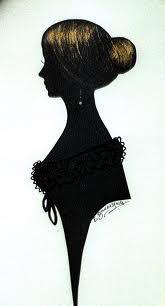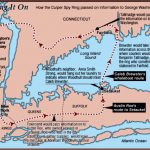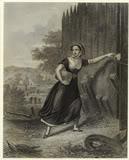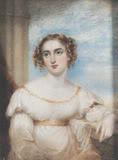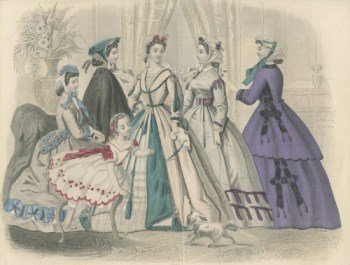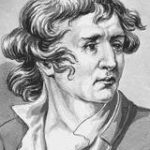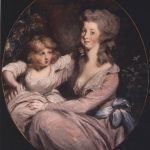Female Spy in the American Revolution
A group of spies known as the Culper Spy Ring operated from 1778 to 1780 in an intricate network from British-occupied New York City to Setauket, Long Island, north to Connecticut, and then west to George Washington’s headquarters at Newburgh, New York. Agent 355 was the code name of a female spy in the Culper Ring. Her real identity is unknown. The spy network was particularly effective in gathering valuable information from careless conversations between the British and their sympathizers.
In 1778, Benjamin Tallmadge, a young American officer who was General George Washington’s new intelligence chief, organized an ingenious top-secret network of spies. Washington ordered that not even he himself should know who they were. For recruits, Tallmadge turned to old friends and acquaintances in his hometown of Setauket, Long Island.
Abraham Woodhull was chosen as his agent, but Woodhull (code name Samuel Culper, Sr.) soon fell under suspicion of British counterintelligence due to his frequent trips to Manhattan. So Woodhull recruited a relative living in his sister’s Manhattan boardinghouse, a dry goods merchant and society reporter, Robert Townsend (code name Samuel Culper, Jr.).
Utilizing a variety of tricks, including a type of invisible ink developed by the brother of future Chief Justice John Jay, the Culper Ring provided timely and accurate intelligence to American military leaders, most notably General Washington.
Townsend, the ring’s central figure, gathered information about British forces in New York City and passed it on to Setauket tavern keeper Austin Roe, who rode 110 miles into New York ostensibly to buy supplies but who also carried these dispatches (often written in invisible ink and code) from Townsend’s New York store back to Setauket.
In Setauket, Caleb Brewster, another ring member and Tallmadge’s childhood friend, was captain of a whaleboat that raided British shipping on Long Island Sound. Since Brewster was a well know figure in Setauket, it was not safe for him to always land his boat in the same spot, so he had six landing places. Every few weeks he would slip into one of Setauket Harbor’s coves to receive dispatches.
Anna Smith Strong, who lived nearby on Strong’s Neck, would signal Brewster’s exact location by using her clothesline and a certain number of handkerchiefs hanging out to dry. At the location provided by Strong, Woodhull then passed the dispatches to Brewster.
Robert Townsend’s early reports to Tallmadge indicated that he could get good information on the British Navy, but little on the British Army. This situation continued for months until Woodhull mentioned in a letter to Tallmadge: “I intend to visit 727 [code for New York] before long and think by the assistance of a 355 [code for lady] of my acquaintance, shall be able to outwit them all.” (Woodhull frequently used code numbers from Tallmadge’s code book to replace words.)
Within two months, detailed headquarters-level intelligence on the British Army flowed to Washington in Newburgh. This is the only direct reference to Agent 355 in any of the Culper Ring documents. It is believed that she was a member of a prominent Loyalist family (British supporters) in New York City with easy access to British society and British officers.
Major John Andre, chief of British intelligence, was considered the most eligible bachelor in New York, but women were also his weakness. In 1777, for example, when the British occupied Philadelphia, Andre held a secret meeting in the Darragh house where he was quartered. Housewife Lydia Darragh sneaked up to the closed door, listened in, and subsequently warned General Washington of an impending attack on his army.
When the British Army took to the field, it became obvious that Washington had been warned of their surprise attack. During Andre’s investigation of the leak, he questioned everyone in the Darragh household except Lydia – since he believed that eighteenth-century women all held the same political views as their husbands.
The Culpers’ secret reports all but ceased when Major Andre went to South Carolina in December 1779 for the siege of Charleston, and Washington was soon complaining to his aide Alexander Hamilton that the ring’s information had become useless.
However, within a few weeks of Andre’s return to New York in May 1780, the Culper Ring was reporting the biggest scoop of the war: an American general was “in compact with the enemy” and was about to betray the American cause. This concerned covert British plans to use an American general to capture West Point, the most important fort on the continent.
By the summer of 1780, General Benedict Arnold had gained command of West Point, and was preparing to surrender it to the British Army in return for money. Major Andre handled the correspondence-based negotiations with the commander at West Point, Arnold, originally making contact through Arnold’s wife – Andre’s old Philadelphia theater friend, Peggy Shippen.
Benjamin Tallmadge wrote the governor of Connecticut, who was in charge of supplying West Point, to expect “some sudden and unexpected stroke” and that “the enemy would know well American forces and disposition.” Tallmadge added, “And for God’s sake be guarded against such a movement.”
Was Abraham Woodhull’s female acquaintance, with whose help he expected to “outwit them all,” a confidante of John Andre? If so, this would explain why the spy ring’s reports ceased when Andre left New York, and resumed when he returned.
Meanwhile, at Washington’s headquarters, BenjaminTallmadge and Alexander Hamilton took charge of tracking the developments. A view of these ongoing machinations can be seen in Hamilton’s letter to his best friend, fellow aide John Laurens. Written after the September 1780 arrest of Andre, the letter shared some aspects of the plot that could never have come to Laurens through public sources.
Hamilton wrote that the scheme traced back to June 1780 (coinciding with Andre’s return to New York), and noted that the Americans had intercepted some of the letters between the conspirators. While neither Hamilton nor Tallmadge ever explicitly credited a source, ringleader Robert Townsend’s ledgers and other Culper letters show that a pattern of action occurred whenever Arnold and Andre corresponded.
It is speculated that it was 355 who passed along the critical information that exposed the treason of Benedict Arnold and led to the arrest of Major John Andre, who was captured with maps of West Point and a pass signed by Arnold in his possession. Benjamin Tallmadge’s memoirs reveal a struggle to prevent the news of Andre’s capture from reaching Benedict Arnold, who ultimately escaped. Andre confessed and was hanged.
During this period, Abraham Woodhull’s correspondence indicates that Robert Townsend and other Culper ring members fled New York City and went into hiding. After about two weeks, sensing a decline in tempers, they returned. But Woodhull then informed Tallmadge of the arrest of “several of our dear friends,” including “one who hath been ever serviceable to this correspondence.”
Townsend’s emotional reaction to this news is evident through his own ledgers and in Woodhull’s letters. He traveled to Setauket and arrived at Woodhull’s home in a state of extreme distress. According to Woodhull, Townsend swore to stop spying, and proceeded to steal large sums of money from every business with which he was connected, including his father’s, for a total of over 600 pounds in ten days – a veritable fortune at the time.
When the trap closed on Andre, it triggered a roundup of suspects in British-occupied territory. A pregnant Agent 355 was arrested and questioned, but refused to reveal any information on her activities or the father of her child. Had Townsend formed a powerful emotional attachment to her, and was gathering money to ransom her freedom?
Agent 355 was held aboard the notorious prison ship HMS Jersey in New York harbor, where conditions on those prison ships were so horrific that life expectancy was only a few months. She later gave birth to a boy, but allegedly died aboard the ship.
The Culper reports then decayed significantly, even after Robert Townsend resumed spying. According to family correspondence, Townsend lived out his days depressed, unmarried and drinking heavily.
Because of the nature of espionage, good spies leave little documentation behind. But enough information remains to suggest that the Culper Spy Ring played a significant role during a dark period in the Revolutionary War, and that this band of citizen-spies scored one of the most important intelligence coups in American history.
SOURCES
Wikipedia: Agent 355
National Women’s History Museum: 355
History News Network: Who Was Agent 355?
